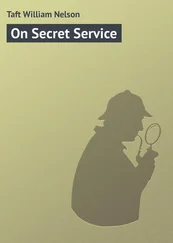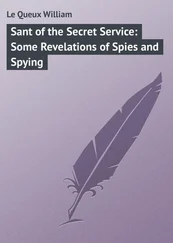1994 The 1994 Crime Bill is passed, providing that any person manufacturing, trafficking in, or possessing counterfeit U.S. currency
abroad may be prosecuted as if the act occurred within the United States.
1997 Congressional legislation passed in 1994 goes into effect granting Secret Service protection to presidents elected to office after January 1, 1997, for ten years after they leave office. Individuals elected to office prior to January 1, 1997, continue to receive lifetime protection.
1998 Broadening the jurisdiction of the Secret Service and other federal law enforcement agencies, the Telemarketing Fraud Prevention Act allows for criminal forfeiture of the proceeds of fraud. The Identity Theft and Assumption Deterrence Act establishes the offense of identity theft. Penalties are established for anyone who knowingly transfers or uses, without authority, any means of identification of another person with the intent to commit an unlawful activity.
2000 The Presidential Threat Protection Act authorizes the Secret Service to participate in the planning, coordination, and implementation of security operations at special events of national significance as determined by the president. These events are called national special security events.
2001 The Patriot Act expands the Secret Service’s role in investigating fraud and related activity in connection with computers. In addition, the act authorizes the director of the Secret Service to establish nationwide electronic crimes task forces to assist law enforcement, the private sector, and academia in detecting and suppressing computer-based crime. The act increases the statutory penalties for manufacturing, possessing, dealing, and passing counterfeit U.S. or foreign obligations. It also allows enforcement action to be taken to protect financial payment systems while combating transnational financial crimes directed by terrorists or other criminals.
2002 The Department of Homeland Security is established, transferring the Secret Service from the Department of the Treasury to the new department effective March 1, 2003.
2004 Barbara Riggs, a veteran agent of the Secret Service, becomes the first woman in the agency’s history to be named deputy director.
2006 The network of Secret Service Electronic Crimes Task Forces is expanded from fifteen to twenty-four nationwide task forces dedicated to fighting high-tech computer-based crimes.
2007 Protection begins for presidential candidate Barack Obama on May 3 , the earliest initiation of Secret Service protection for any candidate in history. Because of her status as a former first lady, presidential candidate Hillary Clinton was already receiving protection before she entered the race.
2008 Protection of presidential candidate John McCain begins on April 27. Just before the presidential candidates announce their selections for vice presidential running mates, Joe Biden and Sarah Palin receive protection. After Barack Obama is elected on November 4, his children, Malia and Sasha, receive Secret Service protection.
2009 Barack Obama is sworn in as the forty-fourth president on January 20.
Based on the time line available at
www.secretservice.gov/history.shtml
Acknowledgments

MY WIFE, PAMELA Kessler, is my partner in life and in writing. A former Washington Post reporter and author of Undercover Washington , about the spy sites of the nation’s capital, Pam came up with the title for the book, accompanied me on key Secret Service interviews at the training center and at headquarters, contributed vivid descriptions, and pre-edited the manuscript. I am grateful for her love and wise judgment.
My grown children, Rachel and Greg Kessler, rounded out the picture with their love and support. My stepson, Mike Whitehead, is a loyal and endearing part of that team.
Mary Choteborsky associate publishing manager of Crown Publishing, edited the final manuscript brilliantly. She and my previous editor Jed Donahue provided just the right balance of encouragement and guidance. When it comes to book publishing, Mary and her team are unrivaled.
I am lucky to have my agent, Robert Gottlieb, chairman of Trident Media, on my side. Since 1991, Robert has guided my book-writing career and been a source of steadfast support.
For years, I had been gathering string on the Secret Service. But I began work on the book in earnest when a Secret Service agent and later others came forward to alert me to management problems at the agency. All agents in good standing, their sole purpose was to improve the Secret Service and ultimately avert another assassination. Along with former agents who helped, they are patriots, and they have my appreciation and respect.
The Secret Service agreed to cooperate on this book, the only book about the agency to receive such cooperation. While I made it clear in an email at the outset that the book would address management problems I had already raised in an article, based on my previous books and stories, Secret Service officials believed that I would portray the agency accurately and fairly.
The Secret Service arranged interviews with a range of Secret Service officials, gave demonstrations and tours of the agency’s training center and the most secret headquarters components, gave approval to former agents to talk with me, and provided photos and compiled data in response to questions.
Mark Sullivan, director of the Secret Service; James W. Mackin, deputy assistant director of Government and Public Affairs; Eric P. Zahren, special agent in charge of that office; and Edwin Donovan, assistant special agent in charge of that office, have my appreciation for their help.
In the end, more than a hundred current or former agents up to the level of director and deputy director agreed to be interviewed, either on the record or without attribution. I am grateful to them for providing what I believe is a complete portrait of an agency that is a bulwark of our democracy. My hope is that the problems revealed in the book will lead to reforms that could avert a calamity.
The Terrorist Watch: Inside the Desperate Race to Stop the Next Attack
Laura Bush: An Intimate Portrait of the First Lady
A Matter of Character: Inside the White House of George W. Bush
The CIA at War: Inside the Secret Campaign Against Terror
The Bureau: The Secret History of the FBI
The Season: The Secret Life of Palm Beach and America’s Richest Society
Inside Congress: The Shocking Scandals, Corruption, and Abuse of Power Behind the Scenes on Capitol Hill
The Sins of the Father: Joseph P. Kennedy and the Dynasty He Founded
Inside the White House: The Hidden Lives of the Modern Presidents and the Secrets of the World’s Most Powerful Institution
The FBI: Inside the World’s Most Powerful Law Enforcement Agency
Inside the CIA: Revealing the Secrets of the World’s Most Powerful Spy Agency
Escape from the CIA: How the CIA Won and Lost the Most Important KGB Spy Ever to Defect to the U.S.
The Spy in the Russian Club: How Glenn Souther Stole America’s Nuclear War Plans and Escaped to Moscow
Moscow Station: How the KGB Penetrated the American Embassy
Spy vs. Spy: Stalking Soviet Spies in America
The Richest Man in the World: The Story of Adnan Khashoggi
The Life Insurance Game
Читать дальше













